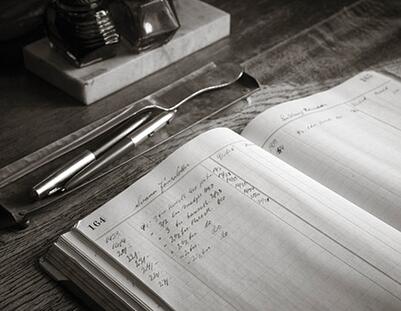General Ledger Accounts
The accounts that are used to sort and store transactions are found in the company’s general ledger. The general ledger is often arranged according to the following seven classifications. (A few examples of the related account titles are shown in parentheses.)
- Assets (Cash, Accounts Receivable, Land, Equipment)
- Liabilities (Loans Payable, Accounts Payable, Bonds Payable)
- Stockholders’ equity (Common Stock, Retained Earnings)
- Operating revenues (Sales, Service Fees)
- Operating expenses (Salaries Expense, Rent Expense, Depreciation Expense)
- Non-operating revenues and gains (Investment Income, Gain on Disposal of Truck)
- Non-operating expenses and losses (Interest Expense, Loss on Disposal of Equipment)
Balance Sheet Accounts
The first three classifications are referred to as balance sheet accounts since the balances in these accounts are reported on the financial statement known as the balance sheet.
Balance sheet accounts
- Assets
- Liabilities
- Stockholders’ (or Owner’s) equity
The balance sheet accounts are also known as permanent accounts (or real accounts) since the balances in these accounts will not be closed at the end of an accounting year. Instead, these account balances are carried forward to the next accounting year.

Income Statement Accounts
The four remaining classifications of accounts are referred to as income statement accounts since the amounts in these accounts will be reported on the financial statement known as the income statement.
Income statement accounts
- Operating revenues
- Operating expenses
- Non-operating revenues and gains
- Non-operating expenses and losses
The income statement accounts are also known as temporary accounts since the balances in these accounts will be closed at the end of the accounting year. Each income statement account is closed in order to begin the next accounting year with a zero balance.
The year-end balances from all of the income statement accounts will be combined and entered as a single net amount in Retained Earnings (a balance sheet account within stockholders’ equity) or in a proprietor’s capital account.
Note: If an account has not had any activity in the current or recent periods, it is often omitted from the current general ledger.
Chart of Accounts
The chart of accounts is simply a list of all of the accounts that are available for recording transactions. This means that the number of accounts in the chart of accounts will be greater than the number of accounts in the general ledger. (The reason is that accounts with zero balances and no recent entries are often omitted from the general ledger until there is a transaction for the account.)
The chart of accounts is organized similar to the general ledger: balance sheet accounts followed by the income statement accounts. However, the chart of accounts does not contain any entries or account balances.
The chart of accounts allows you to find the name of an account, its account number, and perhaps a brief description. It is important to expand and/or alter the chart of accounts to accommodate the changes to an organization and when there is a need for improved reporting of information.

What Transactions Should Go in the General Ledger?
The general ledger includes a small company’s business accounts and all transactions that affect these accounts. Business transactions posted to the general ledger are recorded through journal entries. These entries record increases and decrease to the business’s assets, liabilities and owner’s equity accounts. Journal entries posted to the general ledger can also record transactions that reclassify amounts from one account to another, correct accounting errors and close temporary accounts at the end of a fiscal year.
Asset Transactions
A small business’s assets typically include cash; accounts receivable; and property, plant and equipment. Business assets can also include other physical assets, such as land, or intangible assets, such as a patent or trademark. Asset-related journal entries posted to the general ledger generally record increases or decreases to these accounts. Examples of typical asset transactions include the purchase or sale of physical or intangible assets, cash collection from credit customers, depreciation of property or equipment, and credit or cash sales to customers.
Liability Transactions
Liability accounts in the general ledger are made up of accounts payable, salaries payable, notes payable and other accounts that reflect what the business owes in the current fiscal year and beyond. Liability-related journal entries posted to the general ledger typically will record increases or decreases to these accounts. Examples of typical liability transactions include payment of accounts payable, credit purchases by the business and business expenses, such as salaries, taxes and interest, that may be paid off by the end of the current or future fiscal year.

Equity Transactions
Owner’s equity accounts reflect the capital invested in the business. In other words, if the business uses its assets to pay off all of its liabilities, the amount remaining is equal to the balance in the owner’s equity or capital account. It’s also possible for the business to have a capital-drawing account, which records any withdrawals of capital by the business owners. Equity-related journal entries posted to the general ledger record increases or decreases to these accounts. For example, if a business owner injects cash into the business, a journal entry will record an increase to the owner’s capital and cash accounts.
Other Transactions
General ledger journal entries can also be used to reclassify amounts. For example, a long-term liability that comes due in the current fiscal year should be transferred from a long-term liability to a current liability account. Correcting entries fixes errors found in the general ledger, such as an incorrect customer payment posted to accounts receivable. Journal entries are also used to close out temporary accounts at the end of the fiscal year. For example, all credit customer accounts found in the accounts receivable sub-ledger are closed to the main accounts receivable account in the general ledger.
The Purpose and Practice of General Ledger Accounting
As the name suggests, the general ledger is a key accounting document that provides a general overview of all of a company’s accounting transactions. For companies who opt to outsource their accounting, many details of accounting methods can be left to the professionals. However, the general ledger is such a central document that any small business owner can benefit from understanding its form and function. At Ignite Spot, we strive to keep our clients well informed about their outsourced accounting and bookkeeping. For a small business owner, understanding how general ledger accounting works can be very helpful.
A general ledger contains accounts covering the assets and liabilities that make up a business’s activities. Typically, the accounts of the general ledger are sorted into five categories within a chart of accounts. These five categories are assets, liabilities, owner’s equity, revenue, and expenses. Asset accounts normally include cash, accounts receivable, inventory, investments, and fixed assets. Liability accounts may include accounts payable, notes payable, and accrued expenses payable.
In general ledger accounting, a business’s transactions are typically recorded using the double-entry bookkeeping method. In other words, every transaction is posted twice. Debits are offset by credits, assets are offset by liabilities, and losses are offset by income. The strength of this system is that by maintaining two columns for every account, all of the accounts can be checked for accuracy. Since it was first devised by a merchant in the 13th century, the double-entry system has been used worldwide by companies of all sizes.
In practice, the information found within the general ledger is used to produce various documents that depict a company’s current financial state and track changes over time. Both the balance sheet and the income statement are derived from the information on the general ledger. The general ledger is used to prepare financial statements that may be used by the business owner, by shareholders, or for distribution to investors. A general ledger report shows all of the general ledger activity within a particular date range. A business might refer to a general ledger report from a certain month or quarter to assess the overall picture of the company’s financial standing. In addition, reports derived from the general ledger can be used to identify any potential errors in bookkeeping or to guard against fraud.
Depending on the company, the general ledger may be maintained in a physical book or on computer software. Many companies opt to download software to quickly update the general ledger and to extract information from it into other related documents. In some cases where outsourced accounting is used, companies may access their general ledger online. Whether you use a paper or electronic version, no general ledger is complete without source documents, such as bills or canceled checks, to affirm its information.